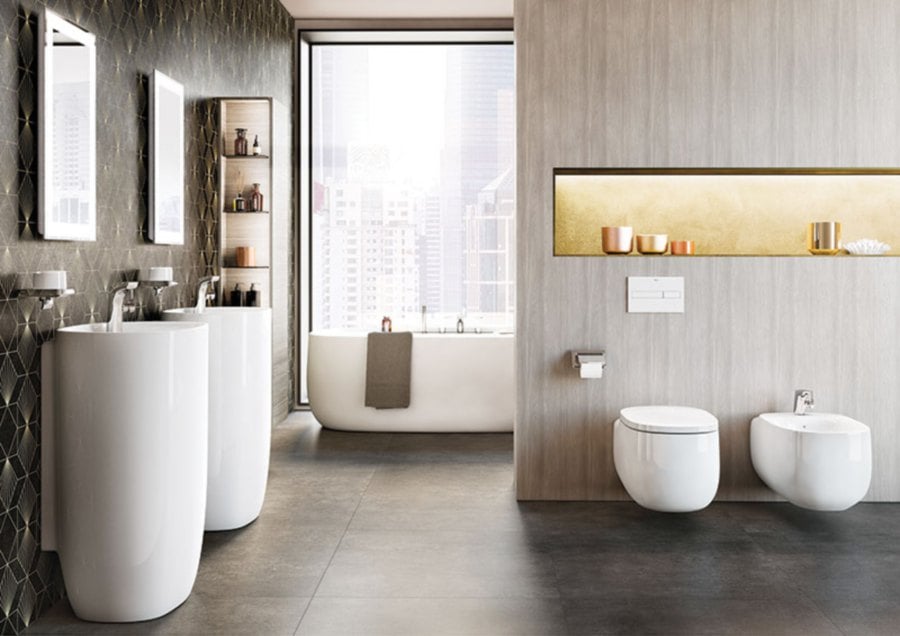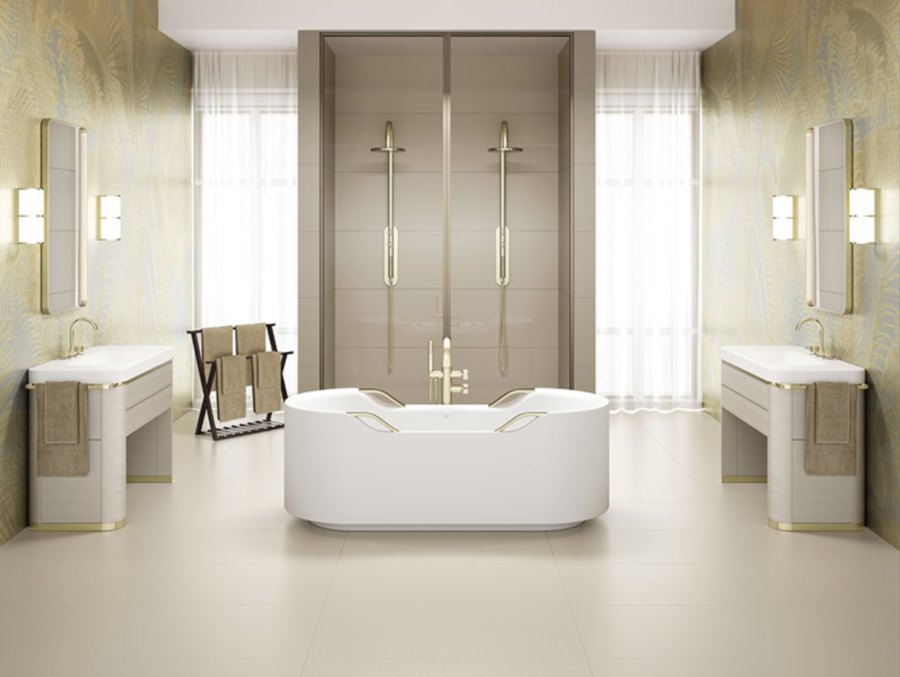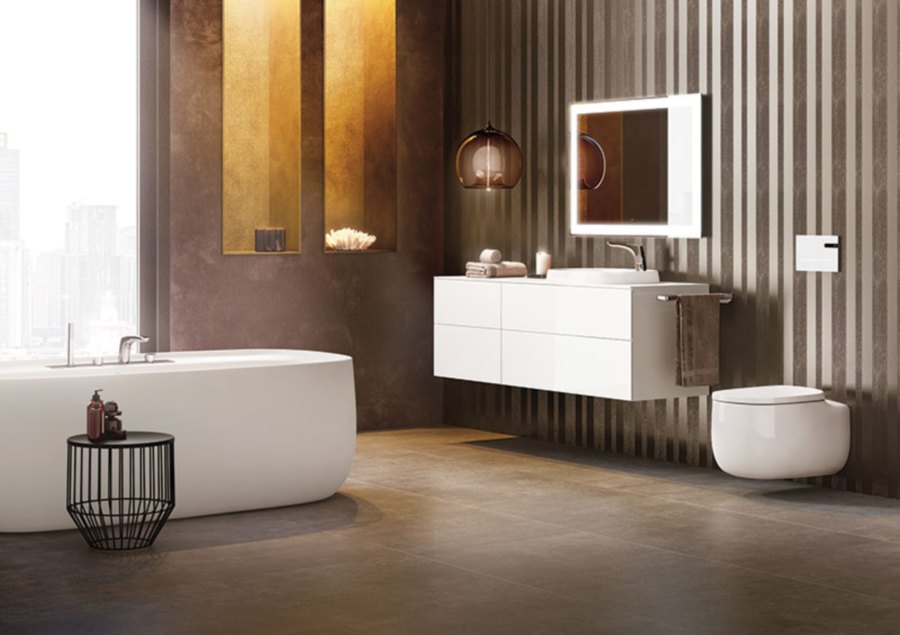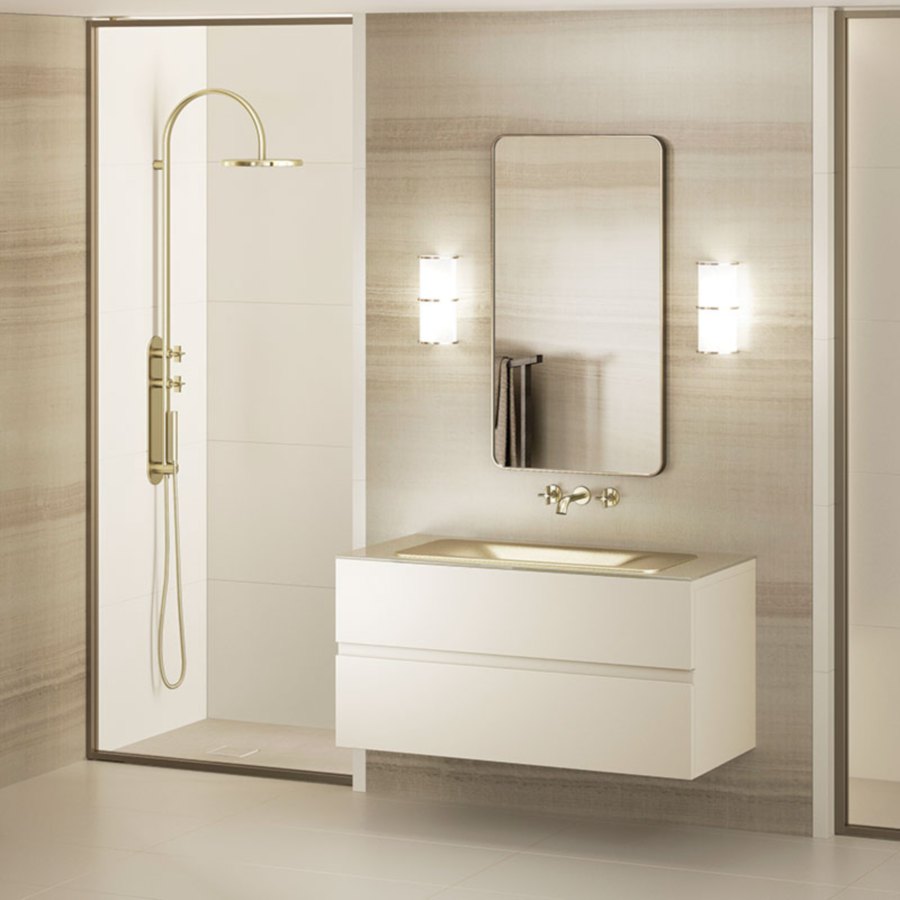“When you’re looking for a space to rent or buy, how often do you take note of the bathroom?” Jose Delicado throws an unexpected question my way. Before I can even muster a reply, Delicado, the managing director of bathroom specialist Roca in Malaysia and Singapore nods his head, smiles and says: “Almost never, right?”
After working with Roca for more than 14 years, it’s not surprising that Delicado understands the dilemma of the space we often take for granted. It’s here at the International Architecture, Interior Design and Building Exhibition (ARCHIDEX) at the KL Convention Centre that Delicado is hoping to change the perception of the public that the bathroom is merely a functional space. “Modern bathrooms are like a living space of their own — it’s about incorporating your basic needs with space for beauty, wellness and relaxation,” he explains.
Speaking about the evolution of the bathroom space is fitting, considering Roca is celebrating a significant milestone — 2017 marks the company’s 100th year in the business.

CHANGING TIMES
“When they first started out, they were actually making cast iron radiators,” says Delicado of the Roca brothers who started their business in Gava, a town just outside Barcelona. Walking me to the two-storey Roca booth at the convention centre, he continues: “Then they thought, hey, if we can make cast iron radiators, we can also make cast iron baths.”
The Roca section, which takes up the space of 36 booths alone, is a showroom on its own. The first floor showcases the brand’s latest products in complete bathroom settings, while the top floor is where visitors sit for a coffee and canapés while admiring the framed print ads of Roca’s early days. “The Roca brothers were always watching the ways of society, and they were very receptive to the changes happening,” he reveals.
The changes Delicado refers to started happening in the early 20th century when advancements in science reached a whole new level. “The discovery of germs and a more specific cause for disease changed the way people perceived cleanliness and hygiene,” writes Anne Reagan, the editorial manager of corporate wellness technology company Limede. As Reagan points out in her article A Brief History of the Bathroom, the middle classes started investing in private baths, an experience which throughout history was something of a celebrated communal act.

COMMUNUAL COOL
The ruins of the Roman baths around Europe may be popular for small wedding shoots these days, but during the run of the Empire, the baths (usually colossal in size) were a central feature in the social life of privileged Romans. This was where the wealthy would meet and network. The expansion of the Empire brought their love for baths with them to the Middle East where hammams were established and thrived for the same reasons.
Baths became more than just a meeting place for the upper class in England of the Middle Ages. “Stews” as they were known, was where men and women could bathe together while enjoying copious amounts of wine and food, a practice which ended in the 1500’s when King Henry VIII banned public bathing houses, based on his belief that they were behind the series of plagues which had weakened the country. “Our modern concept of privacy is a relatively new one,” notes Reagan before pointing out that even ancient toilets were communal.
Chamber pots, a favourite of the Romans, were also still very much in demand among the wealthy of the Victorian era who preferred a sense of privacy and convenience. But as London grew in size and population, so did the stench. By the 18th century, irrigation projects sprouted up in London, allowing the elite to pay for fresh water taps to be installed in the privacy of their homes. As Reagan explains, much of the modern bathroom we know of today is a result of centuries of engineering, innovation and social change.

REVISITING THE BATH
“We tend to take our modern bathrooms for granted,” says Delicado, as he shows me the function of one of showerheads which has a heating and cooling system. “We have all these things that we don’t think twice about, but actually, so much thought goes into inventing it to make our bathroom a more livable space.”
He cites the example of housing developers whom he feels never make the bathroom a priority when drawing out a design or blueprint. “It’s always the last on the list,” he laments, adding that the value of a home would increase if developers, designers and architects actually look at placing more quality products into a home.
In Asia, there’s an emphasis on the toilet bowl as one of the most important items in the bathroom. In Europe, it’s all about cupboard space, much like Delicado’s old bathroom in Catalonia, where he grew up. “Everything was bulky you know? Like the sink and the bath, they were all so thick!” he recalls with a laugh.
But cupboard space, he notes, was always there. “In Asia, we haven’t quite caught on to the idea of having proper spaces for storing things related to the bathroom. We still keep all the other things in a separate room and we end up reducing the bathroom to an entirely functional space,” says Delicado who, prior to Malaysia, spearheaded Roca’s operations in India.
Pulling open several drawers, Delicado proceeds to demonstrate how even the smallest of spaces can incorporate aspects of the modern bathroom. He reveals that there’s a growing demand for sustainable technologies which save water, bathroom materials which are easy to clean, cupboards which are slim yet have enough space to store toiletries and comfortable areas where you can get dressed or destress. “These days, we lead very hectic and stressful lives. People value privacy and their alone time so the bath tub for example, is in demand now because people view it as a place where they can be left alone to bask for a few hours and relax.”

As he speaks of the modern bathroom, Delicado guides me to a space where the ultimate luxury sits — the BAIA Armani/Roca collection, released to commemorate Roca’s centennial. This second collaboration between the Italian fashion giants and the Spanish bathroom experts is another insight into how the bathroom as a space is evolving. “They’re fashion people so when they look at designs, they’re also looking at textures, lines, shapes and so on,” says Delicado, pointing to the classic yet contemporary fixtures made from the finest ceramic and coated in a unique chrome-like gold. “It was a huge challenge for us as we had to experiment with different materials, designs and coatings,” he confides with a contented smile. The process, which took two and a half years to complete, is what Delicado feels will be the future of the bathroom.
Certainly, the bathroom has come a long, long way — from improved sanitary systems to technologies that make the experience of bathing better than ever; from having a small area for basic necessities to a larger space for wellbeing; and most notably, from being a communal place for socialising to a private place to retreat from the noise of the world.
As Raegan aptly concludes: “It took centuries for our culture to bring two important functions together in one convenient room.”




